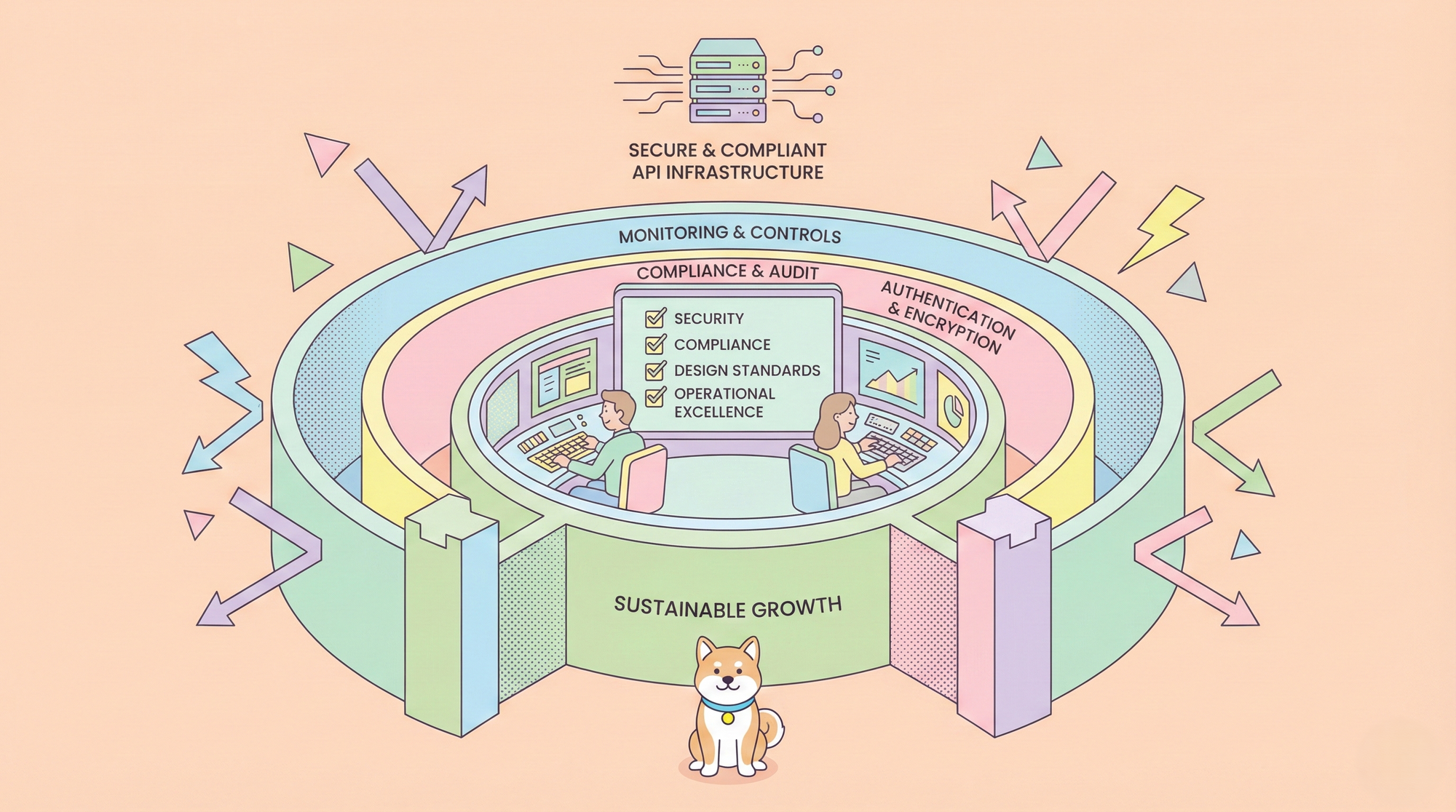Backend development is the process of building the server-side components of a web application. These components typically include databases, APIs, server-side logic, and infrastructure that power applications. Below is a detailed breakdown of each step in the backend development process, explaining the tasks backend developers perform, the tools they use, and how each phase contributes to building robust applications.
1. Requirement Analysis
Objective: Understand project goals, user needs, and technical constraints.
Requirement analysis is the first and most important phase in the backend development process. In this step, backend developers, product managers, and stakeholders gather to understand and document the project's goals, user needs, and technical limitations. This sets the foundation for the entire development process.
Jobs Backend Developers Do:
- Collaborating with stakeholders (product managers, business analysts, clients) to define features and functionalities.
- Identifying the technical requirements, such as scalability, security, and performance.
- Creating user stories and acceptance criteria to clarify what users expect from the system (e.g., “As a user, I can reset my password via email”).
Why It Matters:
Misaligned or unclear requirements can lead to wasted time and effort, causing the development process to fail. Clear, detailed documentation ensures that everyone involved in the project (developers, testers, designers) is on the same page, focusing on the same goals.
Tools:
- Jira: This is an agile project management tool that helps backend developers create user stories, plan sprints, and track progress. Jira’s boards and burndown charts allow for easy task prioritization and real-time team collaboration.
- Confluence: A documentation tool used to centralize technical specifications, API contracts, and architecture diagrams. It integrates well with Jira, linking requirements to the tasks assigned to the development team.
- Slack: A communication tool for real-time messaging and quick clarifications among team members and stakeholders. Slack supports threaded discussions and file sharing, making collaboration smooth.
- Zoom: Hosts virtual meetings such as requirement-gathering workshops and sprint planning sessions.
- Apidog (API Prototyping & API Designing): Apidog enables backend developers to quickly draft and collaborate on API specifications. It allows developers to mock responses and share API documentation with stakeholders for feedback before the development begins.
2. System Design
Objective: Plan the architecture, databases, APIs, and infrastructure.
System design is the phase where developers and architects decide how the application’s backend should be structured. They choose whether to use a monolithic architecture (one large system) or microservices architecture (smaller, independent services). Additionally, they define the databases and API contracts, ensuring the system is scalable and performant.
Jobs Backend Developers Do:
- Choosing between monolithic or microservices architecture based on the project's scale and needs.
- Designing databases: deciding whether to use relational databases (SQL) or NoSQL databases based on the data structure.
- Defining API contracts, including endpoints and request/response formats.
- Planning for scalability, load balancing, and caching to ensure high availability and responsiveness.
Why It Matters:
A poor system design can lead to technical debt, increased maintenance cost, and scalability issues. A well-designed system ensures smooth development and can handle future growth.
Tools:
- Apidog (API Design): Apidog helps in designing APIs, allowing backend developers to create interactive API documentation using OpenAPI specs. Developers can auto-generate mock servers, validate API schemas, and collaborate with team members.
- Lucidchart (Diagramming): This tool helps visualize system architecture, including data flow diagrams and entity-relationship (ER) diagrams. It assists backend developers in planning system interactions and ensuring all components are aligned.
- PostgreSQL (Database Planning): PostgreSQL is an open-source relational database management system (RDBMS) that backend developers use for designing and implementing database schemas.
- Spring Boot (Framework): This is a Java-based framework that simplifies the setup of microservices and embedded servers. Spring Boot helps reduce boilerplate code and accelerates development.
- Docker (Containerization): Docker helps backend developers package applications and their dependencies into portable containers, ensuring consistency across development, testing, and production environments.
3. API Development
Objective: Build and expose APIs for frontend/mobile clients.
API development focuses on building and exposing endpoints that frontend or mobile applications will use to interact with the backend. APIs allow for communication between different parts of the system and enable clients to access data or services.
Jobs Backend Developers Do:
- Developing API endpoints using frameworks such as Spring Boot or Node.js.
- Implementing authentication mechanisms like OAuth2 or JWT to secure the APIs.
- Adding rate limiting, logging, and error handling to ensure APIs perform reliably.
Why It Matters:
APIs are the backbone of modern applications. A poorly designed or inefficient API can create integration headaches and hinder the user experience.
Tools:
- Apidog (End-to-End API Management): Apidog allows backend developers to design, test, document, and collaborate on APIs. With Apidog, developers can automate tests, generate client SDKs, and manage the entire API lifecycle.
- Postman (API Testing): Postman is a popular tool for manually testing APIs. Developers can test API endpoints and perform automated testing with collections.
- Swagger (OpenAPI Documentation): Swagger enables the auto-generation of API documentation from code annotations. This documentation helps both backend and frontend developers understand how the API works.
- Spring Security (Authentication): This tool provides comprehensive authentication solutions for APIs, including OAuth2, JWT, and role-based access control (RBAC).
- Feign (HTTP Client): Feign simplifies HTTP communication between microservices by providing a declarative approach to writing REST clients.
4. Database Implementation
Objective: Set up and optimize databases.
This phase involves creating the database, defining its structure, and setting up the connections. The goal is to implement an efficient system for storing, retrieving, and manipulating data. Optimizing database performance is also a key task in this phase.
Jobs Backend Developers Do:
- Writing SQL or NoSQL queries to interact with the database.
- Implementing ORM (Object-Relational Mapping) to map Java objects to database tables and vice versa.
- Optimizing the database by creating indexes, managing connections, and applying caching techniques.
Why It Matters:
Inefficient databases or poorly written queries can significantly slow down applications. A well-optimized database improves performance and scalability.
Tools:
- Hibernate (ORM): Hibernate is a popular ORM tool that maps Java objects to database tables, reducing the need for boilerplate SQL code. It allows developers to interact with databases in an object-oriented manner.
- Liquibase (Schema Migration): Liquibase is used to version-control database changes through XML or YAML scripts. This helps in managing and automating database migrations.
- Redis (Caching): Redis is an in-memory data store used for caching frequently accessed data, like session information. It significantly reduces database load and speeds up response times.
- MySQL Workbench (DB Management): MySQL Workbench is a GUI tool for designing and managing MySQL databases. It allows developers to visually create schemas and run queries.
- Flyway (Migrations): Flyway is an open-source tool that helps automate database versioning using SQL-based scripts, making database migrations easier to manage.
5. Development & Coding
Objective: Write server-side logic.
This is the core development phase, where backend developers write the code that powers the application. They implement business logic, integrate third-party services, and ensure that the backend functions as expected.
Jobs Backend Developers Do:
- Writing clean, modular, and well-documented code.
- Integrating third-party services, such as payment gateways or SMS providers.
- Implementing business logic, data validation, and ensuring security.
Why It Matters:
Well-written code is easy to maintain, debug, and scale. Following good coding practices ensures the application is robust and reliable.
Tools:
- IntelliJ IDEA (IDE): IntelliJ IDEA is an integrated development environment (IDE) with advanced features like code completion, debugging, and support for various frameworks. It's widely used for backend development in Java. For example, Apidog Fast Request is an innovative plugin for IntelliJ IDEA, designed to streamline the API development, testing, and documentation process directly within the IDE. It simplifies API workflows by automatically detecting endpoints in Java/Kotlin projects, generating OpenAPI specifications without the need for extra annotations, and auto-populating request parameters to reduce manual errors.
- Maven/Gradle (Build Tools): These build tools help manage dependencies, automate builds, and package applications as JAR or WAR files.
- Git (Version Control): Git allows developers to track changes in the codebase and collaborate effectively. It supports branching, merging, and versioning, which are essential for team-based development.
- Lombok (Boilerplate Reduction): Lombok is a Java library that reduces boilerplate code by automatically generating getters, setters, constructors, and more through annotations.
- Checkstyle (Code Standards): Checkstyle ensures that the code adheres to predefined coding conventions, making it easier to read, maintain, and scale.
6. Testing
Objective: Ensure functionality, performance, and security.
Testing is essential for ensuring that the backend code works as expected and is free from bugs. Backend developers perform unit tests, integration tests, and load tests to ensure that the backend system can handle high traffic and is secure.
Jobs Backend Developers Do:
- Writing unit tests to test individual methods and functions.
- Conducting integration tests to ensure that different system components work together.
- Performing load testing and security testing to identify performance bottlenecks and vulnerabilities.
Why It Matters:
Testing helps catch bugs early, ensures system reliability, and improves user satisfaction.
Tools:
- Apidog: Apidog's automated testing feature simplifies and accelerates API testing by allowing developers to create test cases for various API endpoints, ensuring continuous validation with every update. It provides comprehensive test coverage, easy setup, detailed test reports, and seamless integration into CI/CD workflows, ensuring high-quality APIs throughout the development lifecycle.
- JUnit 5 (Unit Testing): JUnit 5 is the standard framework for writing unit tests in Java. It allows developers to test individual methods using assertions.
- Testcontainers (Integration Testing): Testcontainers allows backend developers to spin up Docker containers for testing purposes, such as databases or message brokers, during integration tests.
- REST Assured (API Testing): REST Assured is used for validating API responses in a BDD-style syntax, ensuring the API works as expected.
- JMeter (Load Testing): JMeter is used to simulate high traffic to identify bottlenecks and performance issues in the backend system.
- OWASP ZAP (Security Testing): OWASP ZAP is a security testing tool used to scan APIs for common vulnerabilities, such as SQL injection and cross-site scripting (XSS).
7. Deployment
Objective: Release code to production.
Deployment involves releasing the code into the production environment, where users can access the application. Developers package the application, set up CI/CD pipelines, and deploy the app on cloud platforms.
Jobs Backend Developers Do:
- Containerizing the application using Docker.
- Setting up CI/CD pipelines to automate the process of building, testing, and deploying the application.
- Deploying the application on cloud platforms such as AWS or Azure.
Why It Matters:
Automated deployments reduce human error, speed up releases, and allow for more frequent updates.
Tools:
- Docker (Containerization): Docker allows backend developers to package applications and their dependencies into portable containers, ensuring consistency across all environments.
- Jenkins (CI/CD): Jenkins automates the process of building, testing, and deploying applications. It supports continuous integration and continuous delivery pipelines.
- Kubernetes (Orchestration): Kubernetes is an orchestration tool for managing containerized applications, enabling automatic scaling and fault tolerance.
- AWS EC2 (Cloud Hosting): AWS EC2 provides virtual servers for deploying applications. EC2 instances can be auto-scaled to handle increased traffic.
- Ansible (Infrastructure as Code): Ansible automates the provisioning and configuration of servers, making deployment and infrastructure management more efficient.
8. Monitoring & Maintenance
Objective: Ensure uptime and performance.
Monitoring and maintenance are ongoing tasks that ensure the backend system remains reliable and performs well. It involves tracking system performance, logs, and responding to incidents.
Jobs Backend Developers Do:
- Monitoring system logs and performance metrics.
- Optimizing database queries and applying patches to fix bugs and security vulnerabilities.
Why It Matters:
Proactive monitoring helps identify and resolve issues before they affect users, ensuring high availability and performance.
Tools:
- Prometheus + Grafana (Metrics): Prometheus is a monitoring system that collects and stores metrics. Grafana provides dashboards to visualize the metrics and identify performance bottlenecks.
- ELK Stack (Logging): The ELK stack (Elasticsearch, Logstash, Kibana) is used for centralized logging. It helps backend developers analyze and debug application logs efficiently.
- New Relic (APM): New Relic is an application performance monitoring (APM) tool that tracks the performance of applications in real-time.
- Sentry (Error Tracking): Sentry captures exceptions and sends alerts to developers when errors occur in production.
- PagerDuty (Incident Management): PagerDuty provides real-time alerts and incident management, allowing backend developers to respond quickly to critical failures.
9. Documentation
Objective: Maintain up-to-date technical docs.
Documentation is critical for understanding how the system works and troubleshooting issues. Backend developers write API documentation, deployment guides, and technical manuals.
Jobs Backend Developers Do:
- Writing API documentation to explain how to use the API endpoints.
- Creating deployment guides to document how to deploy the application.
- Writing troubleshooting manuals to help resolve common issues.
Why It Matters:
Documentation accelerates onboarding, helps developers understand the system, and makes troubleshooting easier.
Tools:
- Apidog (API Documentation): Apidog auto-generates interactive API documentation from OpenAPI specs, making it easy for developers to keep API docs up to date.
- Swagger UI (API Explorer): Swagger UI allows users to test API endpoints directly from the browser, making it easy for frontend developers to interact with the backend.
- Confluence (Knowledge Base): Confluence is used to host architecture diagrams, runbooks, and other technical documentation for the team.
- Markdown (Lightweight Docs): Markdown is a lightweight syntax for writing documentation, often used for README files and technical guides.
- ReadTheDocs (Hosting): ReadTheDocs hosts versioned documentation websites, making it easy to publish and share technical documentation.
Final Note
The backend development process is iterative. Tools like Apidog for API development lifecycle and Kubernetes for deployment streamline workflows, while Prometheus and Apidog ensure reliability and scalability. Choosing the right tools aligned with your stack (e.g., Spring Boot + Apidog for Java-based APIs) maximizes efficiency and productivity.



